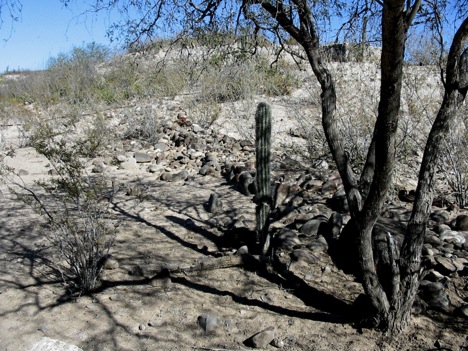
By David Kier
www.vivabaja.com
Co-author of ‘The Old Missions of Baja & Alta California, 1697-1834’
The sixth California mission was founded on January 1, 1720 by Jesuit Padre Nicolás Tamaral at a site originally discovered in 1712 by Padre Piccolo while exploring southwest from Mulegé. The mission prospered for several years and the Cochimí Indian neophyte population grew to 2,000 members by 1730. About the year 1735, the mission was moved 10 miles south to a place the Cochimí called Cadegomó. Following the move, the original site became known as Purísima Vieja.
A report made in 1744 indicates the mission was productive, owed nothing, and had a population of 156 families. Epidemics began to crush this mission (as it had the others on the peninsula) and the native population of La Purísima dropped to 54 by the year 1800. That was just 5 years after the neophytes from the mountain mission of Guadalupe were transferred to La Purísima when Guadalupe was abandoned. La Purísima functioned as a mission for 102 years before it too was abandoned for lack of neophytes to convert to Chritianity. Mexicans from the mainland later arrived to take up farming in the lush valley. The irrigation canals built by the missionaries and their neophytes are still functioning, after nearly 300 years!
Photography shows the mission church was still being utilized in the early 1900’s, but fell into ruins in the years that followed. By 1950 only small portions of the church walls remained. Today a few crypts and some rubble is all that marks the mission location, in the town of La Purísima. The site is reached by paved road from the south or a rough, graded road from the east. Only some foundation stones outline the location of the first site, at Purísima Vieja.





